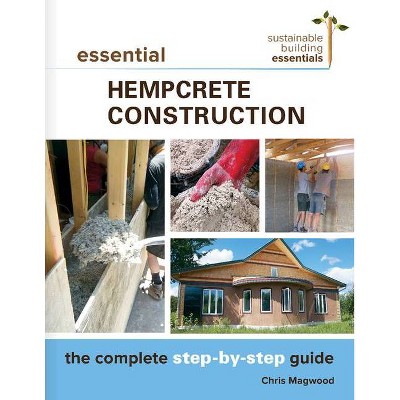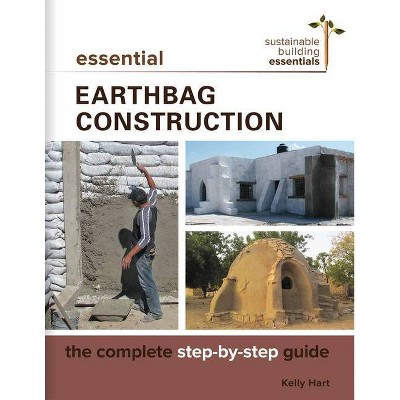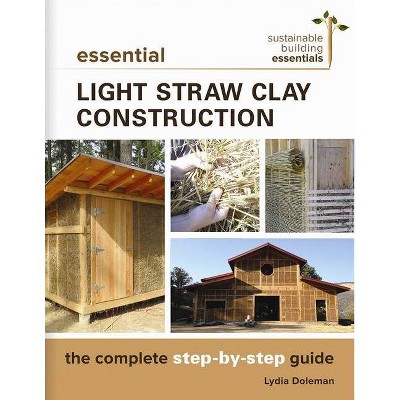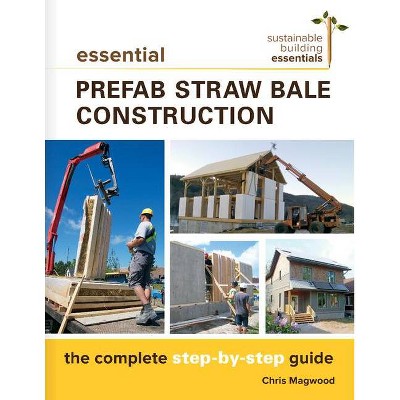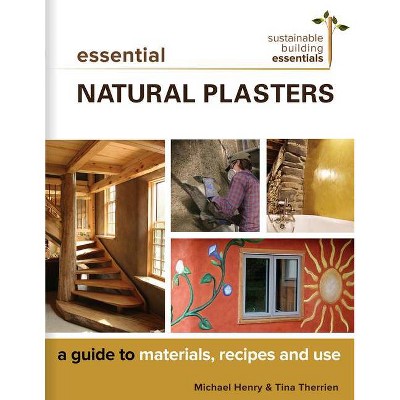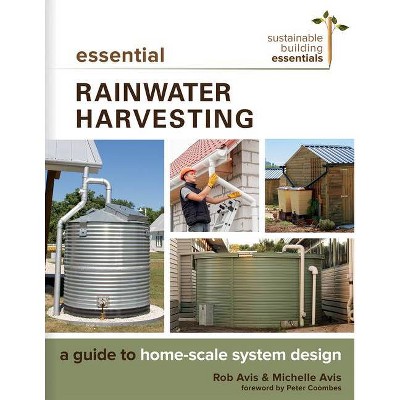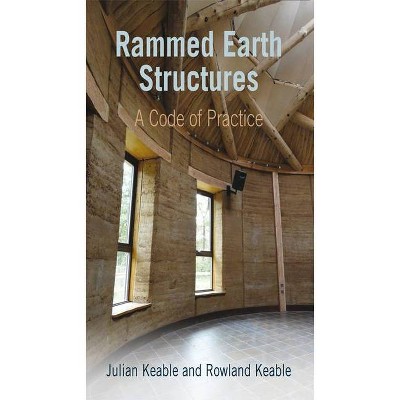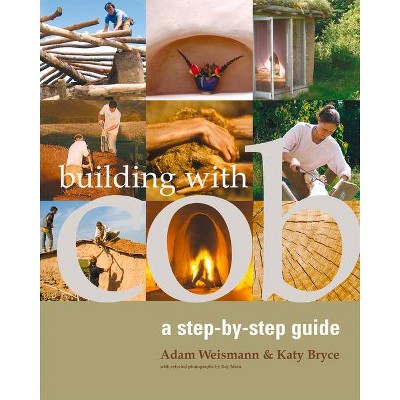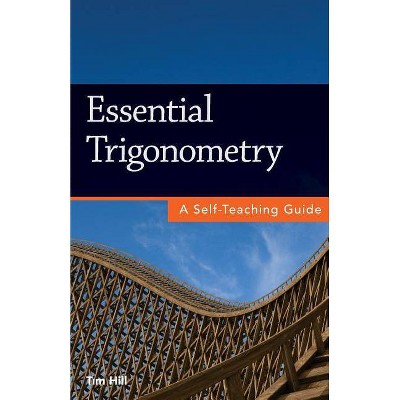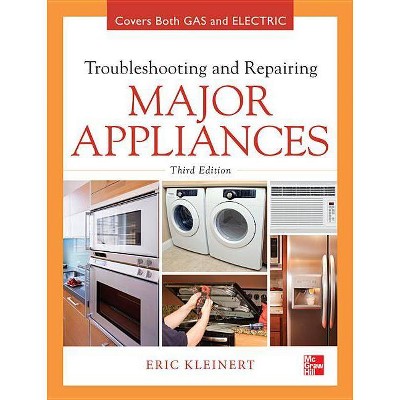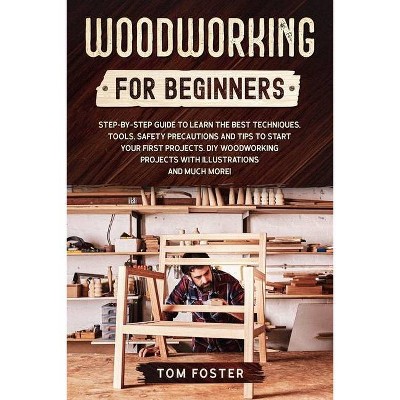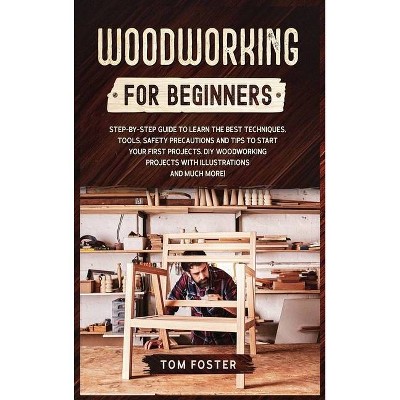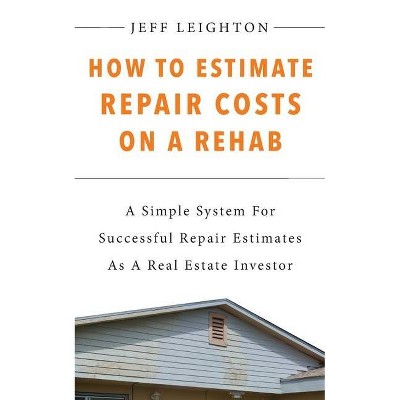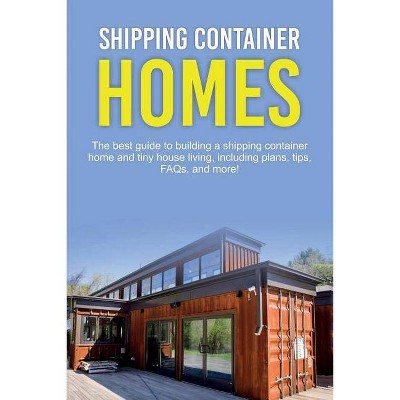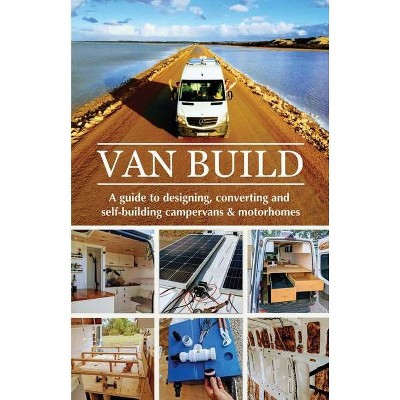Essential Rammed Earth Construction - (Sustainable Building Essentials) by Tim J Krahn (Paperback)
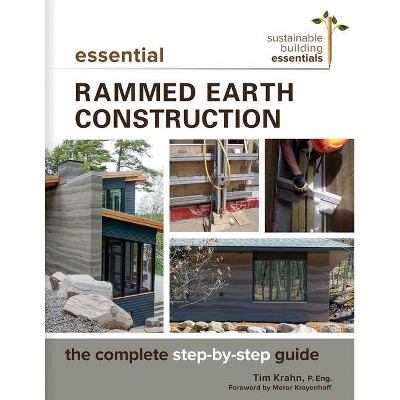
Similar Products
Products of same category from the store
AllProduct info
<p/><br></br><p><b> About the Book </b></p></br></br><p><i>Essential Rammed Earth Construction</i> covers design, building science, tools, and step-by-step building methods for building with rammed earth - and, gravel, and clay or lime/cement binder packed into forms - in any climate with an emphasis on cold climates.</p><p/><br></br><p><b> Book Synopsis </b></p></br></br><p><b>Everything you need to know to build with rammed earth in warm and cold climates.</b></p> <p>Rammed earth - sand, gravel, and clay or lime/cement binder packed into forms - is a low-energy, high-performance building method, yielding beautiful, sustainable results. It's thermally stable and can be insulated, can actively modulate humidity, provides a healthy indoor environment, and allows site materials to be used for major structural and building envelope elements.</p> <p><i>Essential Rammed Earth Construction</i> covers design, building science, tools, and step-by-step building methods for any climate, with a special emphasis on building in cold climates of the northern US, Canada, and northern Europe. Coverage includes: </p> <ul> <li>Overview of earthen building</li> <li>Appropriate use of rammed earth walls</li> <li>Stabilized versus raw rammed earth </li> <li>Design considerations, including structural, insulation, and building envelope details</li> <li>Special considerations for cold and freeze-thaw climates</li> <li>Construction drawings, with step-by-step building instructions</li> <li>Tools and labor covering industrial methods, low-tech techniques, formwork options, mix design, budgets, and schedules</li> <li>Codes, inspections, and permits.</li> </ul> <p>This guide is an essential resource for experienced builders, DIY home owners, designers, engineers, and architects interested in learning about rammed earth construction.<p/><br></br><p><b> From the Back Cover </b></p></br></br>Everything you need to know to build with rammed earth in warm and cold climates.<p>A much-needed and science-based update for designers, engineers, and builders.<br><strong>-- Bruce King, PE. Author, <em>The New Carbon Architecture</em></strong></p><p>Provides excellent background, engineering science, and practical advice for constructing rammed earth structures... and will be especially of interest to those building in colder climes.<br><strong>-- Charles Augarde, Professor in Civil Engineering, Durham University, UK</strong></p><p>A great book for anyone who wants to deepen their technical knowledge of rammed earth wall systems.<strong><br>-- Clifton Schooley, Clifton Schooley & Associates, Rammed Earth Designers and Builders</strong></p><p>Rammed earth -- sand, gravel, and clay or lime/cement binder packed into forms -- is a low-energy, high-performance building method, yielding beautiful, sustainable results. It's thermally stable and can be insulated, can actively modulate humidity, provides a healthy indoor environment, and allows site materials to be used for major structural and building envelope elements. </p><p><em>Essential Rammed Earth Construction </em>covers design, building science, tools, and step-by-step building methods for any climate, with a special emphasis on building in cold climates of the northern US, Canada, and northern Europe. Coverage includes: </p><ul><li> Overview of earthen building </li><li>Appropriate use of rammed earth walls </li><li>Stabilized versus raw rammed earth </li><li>Design considerations, including structural, insulation, and building envelope details </li><li>Special considerations for cold and freeze-thaw climates </li><li>Construction drawings, with step-by-step building instructions </li><li>Tools and labor covering industrial methods, low-tech techniques, formwork options, mix design, budgets, and schedules </li><li>Codes, inspections, and permits. </li></ul><p>This guide is an essential resource for experienced builders, DIY home owners, designers, engineers, and architects interested in learning about rammed earth construction. </p><p>This book could well be the cornerstone of a modern boom in the popularity of rammed earth.<br><strong>-- Stephen Dobson, Ramtec, Western Australia, builder of over 750 rammed earth structures</strong> <p/>Great for a client, architect, engineer, and builder.<br><strong>-- Dr. Paul Jaquin, Structural Engineer, Queenstown, New Zealand</strong></p><p><strong>Tim J. Krahn, </strong>P. Eng. is a registered professional engineer and partner in Building Alternatives Inc., consulting engineers specializing in non-conventional structural and building envelope design. He holds a masters degree in geotechnical engineering, a bachelors degree in civil engineering, is a founding member of the Natural Building Engineering Group, and is the chair of the Ontario Natural Building Coalition. He currently resides in Ontario, Canada. </p><p>New Society's Sustainable Building Essentials Series aims to provide the highest quality information on sustainable building methods and materials. Editors Chris Magwood and Jen Feigin have scoured the world of sustainable building to bring you the techniques and systems that deliver measureable benefits in terms of greater energy efficiency and reduced environmental impact. Written by the world's leading sustainable builders, designers, and engineers, these succinct, user-friendly handbooks are indispensable tools for any project.</p><p/><br></br><p><b> About the Author </b></p></br></br><p><b>Tim J. Krahn</b>, P. Eng. is a registered professional engineer and partner in Building Alternatives Inc., a consulting engineering company specializing in non-conventional structural and building envelope engineering with an emphasis on natural materials and energy efficiency. He holds a masters degree in geotechnical engineering and a bachelors degree in civil engineering from the University of Manitoba, and is a founding member of the Natural Building Engineering Group, the current chair of the Ontario Natural Building Coalition, and is active on the Renewable Materials task force of the Embodied Carbon Network. He received the first building permit for a rammed-earth structure in the city of Ottawa, and has been the structural engineer on more than twenty rammed-earth projects in Canada, including the first net-zero municipal building in Ontario, the Oxford County Municipal Solid Waste Office and Education Centre. He currently resides in Ontario, Canada.</p>
Price History
Price Archive shows prices from various stores, lets you see history and find the cheapest. There is no actual sale on the website. For all support, inquiry and suggestion messages communication@pricearchive.us
